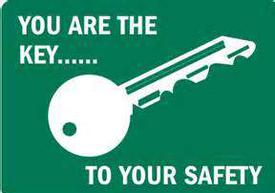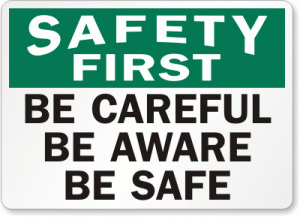SecurityAdvisoryCouncil.com
Security Risk Analysis - Issues - Strategies - Solutions - Resources
Security Risk Advisory Consultants - Advanced Security Planning
Security MostWanted For America!
HOME & FAMILY SECURITY
Safety & Security Issues - Strategies - Solutions
Security Watch Education For Our Homes & Property
What Is Your Home Security Strategy?
10 Home Security Tips
Having a strategy to secure your home from burglars and keeping your family safe is something everyone should consider. Having the attitude of "It will never happen to me" is a sure way to becoming a victim.
As part of your security strategy, there are many aspects of personal and property based security measures you can incorporate into your plan. However, before you build a security plan, it is important to assess your situation from an un-biased perspective. Conduct a security audit of your home so you can properly address areas that may expose your family to dangerous situations.
After the audit, you may want to consider some of the following security tips:
1. Remove house keys from obvious areas like planters and underneath door mats. Install a keyless entry system where the kids know the code and can access the home without you having to leave the back door open. The alarm codes can easily be changed if compromised.
2. Doors to the garage are usually left unlocked. Intruders who are able to access the garage have a free pass into 3. the house.
3. Exterior Lights need to be maintained and bulbs replaced, especially in areas that can easily hide intruders while they are trying to enter the home unseen.
4. Add gravel to walkways and driveway areas to alert you if someone is walking up to your home.
5. Add Home security signs to the front of your property even if you do not have an alarm company. This may deter an individual that may happen upon your home accidentally and make them think twice about entering.
6. Use a metal bar cut to a length a few inches less than the patio door itself. This will allow a patio door to open only a few inches for airflow but still maintain security. A cut off broom handle will also work.
7. Keep bushes trimmed around windows and doors.
Overgrown plants can provide and excellent cover for an intruder if they are trying to break into a home.
8. If you have a home security system, ensure you have multiple panic alarm buttons throughout the home.
9. Have a designated meeting place defined for your entire family in case of any emergency.
10. Consistently check basement and other external entrances for signs of attempted break ins. Intruders may test these areas without the homeowner even knowing they were there prior to an actual break-in occurring.
In summary, having a plan and security strategy can help you protect your home and family from harm and paying attention to just a few of these home security tips can help you maintain a more safe and secure environment.
By Signing Up For Our News Letter, You Will Receive The Latest Security News
Once-A-Month!

University of Kansas Medical Center
Home Security and Safety
Lock up everything. Make it a habit to lock all doors and windows, even when you're home. Reinforce doors with high-quality deadbolts and use a bar or dowel to secure sliding glass doors.
Improve exterior lighting. Install motion-activated lights or set timers for indoor and outdoor lights to give the impression that someone is home.
Manage landscaping. Trim shrubs and trees near doors and windows to eliminate potential hiding spots for intruders.
Conceal valuables. Keep expensive electronics, jewelry, and other valuables out of sight from windows and doors. Use curtains or blinds to block the view inside.
Beware of social media. Do not post vacation details until you have returned. A publicly broadcasted empty home is an invitation for burglary.
Secure your garage. Always close and lock garage doors and windows. Never leave your garage door opener in your car, as thieves can use it to access your home.
Use smart home technology. Security cameras, video doorbells, and remotely controlled smart locks can enhance your home's protection and allow for real-time monitoring.
Stay vigilant with visitors. Before opening the door, identify who is there using a peephole or video doorbell. Ask for official identification from utility workers or repair people.
Online security best practices
Use strong and unique passwords. Do not reuse passwords across multiple sites. A password manager can help you store complex passwords securely.
Enable multi-factor authentication (MFA). This adds an extra layer of security by requiring a second form of verification, such as a code sent to your phone.
Be wary of phishing attempts. Always pause and think before clicking links or opening attachments in suspicious emails or messages. Phishing attacks can disguise themselves as legitimate requests for information.
Keep software and devices updated. Regular software updates, including for operating systems and apps, contain critical security patches that fix vulnerabilities.
Use caution with public Wi-Fi. Avoid conducting sensitive activities like online banking while on public networks. Use a Virtual Private Network (VPN) to encrypt your traffic.
Back up critical data. Regularly back up your important files to an external drive or encrypted cloud service to prevent data loss from cyberattacks or hardware failure.
Community safety
Participate in a Neighborhood Watch. Work with neighbors to monitor and report suspicious activities in your area. This fosters a sense of collective responsibility and communication.
Get to know your neighbors. Building good relationships with those around you creates a support network where you can look out for one another's homes and families.
Organize clean-ups. Community clean-up events can reduce antisocial behavior and make your neighborhood feel safer and more well-maintained.
Support local businesses. Thriving local commerce can contribute to a stronger, safer community by increasing foot traffic and community interaction.
Home Protective Measures
A home security threat assessment involves identifying potential threats, such as burglaries or other crimes, and evaluating vulnerabilities within your property and personal habits that could allow these threats to occur. The goal is to understand the likelihood and potential impact of these threats to implement effective protective measures, which can range from physical security upgrades to changes in your daily routines to create a safer environment.
Key Steps in a Home Security Threat Assessment
Identify Assets and Vulnerabilities: What do you want to protect? This could include your family, possessions, and the property itself.
Where are your vulnerabilities? Consider weak points like poorly lit areas, unlocked doors or windows, weak security systems, or even your daily habits that might create risks.
Identify Potential Threats: Think about who or what might pose a threat. Common threats include:
Burglary and theft: Criminals targeting your home.
Vandalism: Intentional damage to your property.
Environmental threats: Risks from natural disasters or severe weather.
Cyber threats: If you have smart home devices, these can be vulnerable to hacking.
Assess the Likelihood and Impact of Threats: How likely is a threat to occur? Consider factors like your neighborhood's crime rate, your home's visibility, and your routines.
What is the potential impact if a threat occurs? This can range from financial loss to a threat to your personal safety.
Develop and Implement Protective Measures: Physical Security: Install strong locks, motion-sensing lights, a security system, and trim bushes to improve visibility.
Deterrents: Use visible security cameras or "beware of dog" signs to deter potential intruders.
Habitual Changes: Secure your home when you leave, don't leave valuable items visible from windows, and be mindful of your surroundings.
Review and Update: Threats and vulnerabilities change over time. Regularly review and update your home security assessment to ensure your protective measures remain effective.
How To Protect Your Home From
Threats, Vulnerabilities & Risks
A home security threat assessment is a methodical evaluation of a residence's vulnerabilities to identify and mitigate potential risks. It examines both physical and digital security weaknesses, considers local crime trends, and reviews existing deterrents to create a tailored security plan.
How to conduct a home security threat assessment
A complete home security assessment should be conducted in four steps: identify threats, assess vulnerabilities, analyze risks, and develop mitigation strategies.
Step 1: Identify potential threats
This step involves identifying and documenting threats relevant to your property, considering both external and internal factors. Common threats to evaluate include:
Intrusion and theft: Burglary is a prevalent threat, with entry often gained through unsecured doors, windows, and garages. Opportunistic burglars may target homes with visible valuables or signs of prolonged absence.
Natural disasters: Depending on your location, your home may be vulnerable to floods, earthquakes, fires, or severe weather events.
Environmental hazards: These include risks like carbon monoxide leaks and house fires, which can be caused by faulty appliances, electrical issues, or other factors.
Digital vulnerabilities: Smart home devices can be vulnerable to hacking, allowing unauthorized access to cameras, smart locks, or network data. Poor network security and weak passwords also present risks.
Insider risks: Disgruntled employees or service providers who have access to your home can pose a security risk.
Step 2: Assess vulnerabilities
This involves physically inspecting your property to find weaknesses that a potential threat could exploit.
Exterior
Entry points: Check all doors, windows, and garage doors. Vulnerabilities include inadequate or old locks, weak frames, or large, unreinforced glass.
Lighting: Inadequate lighting around the exterior, particularly near entry points, can offer concealment to intruders.
Landscaping: Overgrown shrubs, large trees, or other vegetation can provide hiding spots for burglars.
Fences and gates: Evaluate the condition and height of perimeter fencing and ensure all gates can be securely locked.
Concealment: Ensure valuables are not visible from the street, as this can attract attention.
Ladders and tools: Do not leave ladders or other items that could aid an intruder easily accessible outside.
Interior
Valuables: Consider where valuable assets are stored and their visibility from the outside.
Safety equipment: Ensure smoke detectors, carbon monoxide detectors, and fire extinguishers are all functioning and properly maintained.
Smart devices: Identify all smart home devices and their potential network vulnerabilities.
Operational and digital security
Routines: Recognize if your daily routines are predictable, creating "vulnerability windows" that a criminal could exploit.
Network security: Review your home network for insecure connections, outdated software, and weak passwords.
Social media: Evaluate your family's digital footprint. Over-sharing travel plans or other personal information online can create risks.
Step 3: Analyze risks
For each identified threat and vulnerability, analyze the likelihood of it occurring and the potential impact it could have. Prioritize addressing high-likelihood, high-impact risks first.
Step 4: Develop mitigation strategies
Based on your risk analysis, develop a plan to address the most critical vulnerabilities.
Implement physical deterrents: Upgrade locks to high-quality deadbolts, install window reinforcements, and maintain landscaping to eliminate hiding spots.
Enhance surveillance: Consider installing a professionally monitored alarm system and smart lights that can be controlled remotely.
Secure your smart home: Practice good digital hygiene by using strong, unique passwords and regularly updating software for all smart devices.
Improve procedures: Create family protocols for locking doors and windows, and manage your online presence to avoid giving away sensitive information.
Join community efforts: Participate in a neighborhood watch program to increase collective awareness and security.
Review regularly: Conduct regular reviews, at least annually, or after any significant life changes to ensure your assessment remains up-to-date
As the crime rate has risen over the past years,
home security is more important than ever. Many families have become keenly aware and increasingly concerned about the safety of their homes and families.
This concern has led to the growth and emergence of many of some of the top home security products and services that offer an opportunity for individuals to keep their homes and families safe and secure with some of the most technological ways for the 21st century!
The security industry has surpassed 6.12 Billion in 2023.
Home security products and services today are in high demand. People are always looking for ways to keep their homes safe, and home security companies are constantly introducing new and innovative products to meet this demand. We hope you tap into some of intelligence and take advantage of a few of the products and services we have made available for you.
Take the time to look over the information and intelligence we have made available here to keep you, you business, your property and most importantly, yourself and your families. Feel free to trust and support our sponsors and companies advertising here. They are some of the best ones out there and they care deeply about the safety and security of everyone they deal with.
Thank You for stopping by and save us as one
of your favorites and come back often. We will
continue to cover the safety and security of everyone stopping here because we do care about the
safety of our communities and our world.
Keep an eye on our BLOG and NEWS Centers
for the latest articles, tips, products and
information on being safe!
Security Protection For Our Families
Daily security protection concerns involves a blend of proactive awareness, digital security habits, and physical safety measures. Modern life requires you to be vigilant in both the real world and the digital one, as threats like scams and identity theft are common.
Digital security
Protecting your personal data and devices from online threats is a critical part of daily security. Key practices include using strong, unique passwords with a password manager, enabling multi-factor authentication (MFA) for added security, and being cautious of phishing scams by not clicking suspicious links or providing personal information via email. It's also important to keep all software updated to patch vulnerabilities, use reputable security software with automatic updates, and regularly monitor bank and credit card statements. When using public Wi-Fi, employing a Virtual Private Network (VPN) can help encrypt your data.
Physical security
This focuses on safeguarding your tangible property and your personal safety.
Secure your home with strong locks and consider an alarm system.
Practice situational awareness by being attentive to your surroundings and removing yourself from unsettling situations.
Ensure your car is secure by locking doors and parking in well-lit areas at night.
When walking or jogging, avoid being alone at night, use well-lit paths, and consider carrying a personal alarm.
Be cautious with strangers at your door and avoid hiding spare keys outside.
Protect your mail by not listing your full name on the mailbox and avoid giving personal information over the phone.
Financial and identity protection
Protecting your financial well-being and personal information is a continuous effort. Be vigilant for signs of identity theft, such as unauthorized account activity or unfamiliar debt collection calls.
Using an RFID wallet can help protect against digital skimming of cards. Regularly check free annual credit reports from Equifax, Experian, and TransUnion for any signs of fraud. Shred sensitive documents containing personal or financial information before disposal.
Family Protection at Home
Protecting your family at home involves a comprehensive approach that includes enhancing physical security, safeguarding against household hazards, planning for emergencies, and practicing online safety.
Physical security
Strengthening your home against intruders is a key first step.
Improve locks and entry points. Install deadbolts on all exterior doors and use solid-core or metal doors instead of hollow ones. For ground-floor and basement windows, consider adding window bars or locks that only allow them to open a few inches. Replace flimsy locks with hardened steel screws to reinforce door frames.
Invest in a security system. Professionally monitored systems from providers like SimpliSafe, ADT, and Vivint can deter burglars and alert authorities. Many systems offer DIY installation for lower costs.
Use security cameras and smart features. Visible cameras, doorbell cameras, and motion-activated lights are strong deterrents. Smart home devices can automatically lock doors and turn lights on and off to simulate occupancy.
Manage your home's exterior. Trim overgrown bushes and trees near windows and doors to eliminate hiding spots. Ensure all entrances are well-lit with motion-sensitive fixtures.
Secure valuables. Avoid leaving valuables visible from the street. For important documents or items, use a large, bolted-down safe that is difficult to move
Household safety
Reducing hazards inside the home is crucial, especially for families with small children.
Install detectors. Place smoke alarms in all sleeping areas and on every level of the home. Install carbon monoxide (CO) alarms near bedrooms and other key areas. Test them monthly and replace batteries annually.
Protect against falls. Anchor all top-heavy furniture, including TVs, bookshelves, and dressers, to the wall to prevent tip-overs. Use safety gates at the top and bottom of stairs.
Childproof your home. Use outlet covers, install safety latches on cabinets containing harmful products, and use cordless blinds to prevent strangulation. Secure cords and wires to prevent tripping.
Prevent poisoning. Keep all medications, vitamins, household cleaners, and chemicals in a locked cabinet out of children's reach. Keep the Poison Control hotline number visible: 1-800-222-1222.
Secure firearms. If you keep firearms, store them unloaded in a locked container or safe, with ammunition locked separately.
Emergency preparedness
An emergency can happen at any time. A plan will ensure your family knows how to respond effectively.
Create a family emergency plan. Discuss with your family what to do in different scenarios, such as fire or severe weather.
Establish meeting points. Designate two meeting places: one right outside your home for sudden incidents like a fire, and one farther away in case you can't return home.
Build an emergency kit. Assemble a kit with at least a three-day supply of food and water, flashlights, a first-aid kit, and copies of important documents.
Practice drills. Run fire and emergency evacuation drills twice a year so everyone knows their role and the escape routes.
Cybersecurity
Protecting your family also means securing your digital life from online threats.
Secure your Wi-Fi network. Change the default name and password on your router, enable WPA3 encryption, and keep firmware updated.
Create strong, unique passwords. Use a password manager to generate and store complex passwords for all accounts and enable two-factor authentication (2FA) wherever possible.
Educate your family. Teach family members about online risks, including phishing scams, the importance of privacy, and being cautious about sharing personal information on social media.
Keep software updated. Enable automatic updates for all devices and applications, as updates often include crucial security patches.
Install antivirus software. Use reputable antivirus software on all computers and devices and enable firewalls.
Protecting Your Family In Public
To protect your family in public places, prioritize situational awareness by staying alert to surroundings and minimizing distractions like phones. Have an exit plan for each location and identify safe spots to go if threatened. Teach your children to stay with the group, hold hands, and trust their instincts if a situation feels wrong. For young children, keep them visible and consider safety devices like reins. Additionally, use technology like family tracker apps and ensure everyone has a charged cell phone for emergencies.
Before you go:
Plan a meeting point: Establish a designated spot for your family to gather if you get separated.
Identify exits: Note the entrances and exits of any public space you visit.
Teach children safety rules: Remind children to stay close to you, not to talk to strangers, and to report any uncomfortable situations.
Carry a charged phone: Ensure all family members have a working mobile phone and that location-sharing features are enabled for family tracking apps.
While you are out:
Stay alert and aware: Be mindful of your surroundings, look for suspicious behavior, and avoid distractions like being engrossed in your phone.
Keep children close: Hold hands, use reins for toddlers, and ensure they are always within your sight or with another trusted adult.
Trust your instincts: If a situation or person makes you feel uneasy, leave the area immediately.
Know your safe places: Identify potential safe spots in a public space, such as shops, restaurants, or police stations, where you can seek help if needed.
Be proactive about threats: If you see a suspicious package or someone behaving strangely, inform local authorities.
For immediate threats:
Cover and hide: If you cannot evacuate, find a place to hide out of sight, block the entrance, and remain silent.
Have an escape plan: If you are in a vehicle, know how to calmly drive away from danger or find shelter in a safe area.
Family Strategies for Safety in Public
Protecting your family out in the big wide world you must stay aware of your surroundings, develop a family emergency plan, and teach children specific safety rules. By being proactive and prepared, you can reduce risks and increase your family's safety.
Be aware and prepared
Trust your instincts. If a person or situation makes you feel uneasy, calmly remove yourself and your family. If something feels wrong, it probably is.
Know your exits. When you enter a new building, quickly identify the nearest exits in case you need to leave quickly.
Avoid distractions. Put away phones and avoid loud music. Keep your head up and pay attention to what's happening around you.
Vary your routines. If you frequently visit the same public spaces, change your travel routes and schedules occasionally to avoid creating predictable patterns.
Travel in groups. There is safety in numbers. If possible, avoid going to public spaces alone with young children. When alone, let a friend or family member know where you are going and when you expect to return.
Keep children safe and close
Take a photo. Before you leave, take a quick, full-body photo of your children with your phone. If they get lost, you'll have a recent image showing what they are wearing, which can be shared with security or police.
Dress for visibility. Have your children wear brightly colored clothing that is easy to spot in a crowd.
Use physical connections. For very young children, consider a safety harness or keep them in a stroller. For slightly older kids, insist on holding hands.
Use discreet identification. Place your contact information on a card inside your child's pocket. Avoid putting their name on visible clothing or accessories, which a predator could use to lure them.
Teach them to find a "safe adult." Instruct your children to stay put and find an employee in uniform or a parent with children if they get lost. Teach them to say, "I'm lost. Can you help me find my mom/dad?".
Establish family emergency protocols
Create a code word. Establish a family code word that only your trusted inner circle knows. Teach your children never to go with anyone, even a family friend, who does not know the code word.
Designate a meeting spot. In case you get separated, agree on a specific, easy-to-find meeting place, such as the store's information desk or a park entrance.
Teach emergency calls. Ensure older children know when and how to call 911. They should be able to state their location clearly and accurately.
Practice drills. For scenarios like fires or severe weather, practice what to do. Keeping the drills fun and simple will make your kids more confident and less fearful in a real emergency.
Secure valuables and property
Keep valuables hidden. Store wallets in a front pocket or use a crossbody purse. Avoid dangling bags, which are easy targets for snatchers.
Park strategically. When in a parking lot or garage, choose a spot that is well-lit and as close to the entrance as possible. Always hide shopping bags and other valuables in the trunk.
Be aware when returning to your car. Always have your keys ready as you approach your vehicle. Glance inside before opening the door to make sure no one is waiting inside.
Know how to react to an active threat
RUN, HIDE, FIGHT. In the unlikely event of an active threat, the Department of Homeland Security advises following three simple actions in this order:
RUN: Escape the area if possible. Have an escape route in mind. Leave belongings behind and keep your hands visible and empty as you flee.
HIDE: If escape is not possible, find a secure hiding place out of the threat's view. Lock and barricade doors, turn off lights, and silence your phone. Be as quiet as possible.
FIGHT: As a last resort, if your life is in imminent danger, act aggressively. Yell, throw items, and use improvised weapons to try and incapacitate the attacker.
Follow police instructions. When law enforcement arrives, they will be focused on neutralizing the threat. Follow all commands, keep your hands visible, and do not make sudden movements.
Resources for Family Safety Out in Public
Comprehensive resources for family public safety protection include government agencies, non-profits, and educational materials that cover emergency preparedness, home security, online safety, neighborhood watch programs, fire safety, and child safety.
Emergency preparedness and natural disasters
Ready.gov: The U.S. Department of Homeland Security's official website offers step-by-step guidance on creating emergency plans and building a disaster supply kit. It includes information on how to prepare for various scenarios, such as floods, wildfires, and power outages.
American Red Cross: Provides instructions and templates for creating a family emergency plan, along with information on first aid and what to do before, during, and after a disaster.
FEMA Emergency Financial First Aid Kit (EFFAK): This kit helps families organize critical financial, medical, and household contact information in case of a disaster.
CDC Plan Ahead: The Centers for Disease Control and Prevention offers guidance on personal emergency planning to ensure health and safety during a disaster.
Home security
National Sheriffs' Association: Through its National Neighborhood Watch program, this organization helps connect citizens and law enforcement to reduce crime and improve community safety.
Home security resources: Websites like HowStuffWorks provide articles on strengthening home security through methods like alarm systems, reinforced doors, and strategic lighting.
Local law enforcement: Many police and sheriffs' departments offer community resources, such as safety tips for homeowners and neighborhood safety initiatives.
Online and digital safety
Google Safety Center: The "Be Internet Awesome" program provides free resources for families and educators to teach children digital safety and citizenship through interactive games and guides.
Federal Trade Commission (FTC): The FTC provides information on protecting a child's privacy online and general resources for online safety.
National Center for Missing & Exploited Children: Through its NetSmartz program, it provides age-appropriate videos and activities to help children and teens learn to be safer online.
Common Sense Media: This non-profit offers unbiased reviews of media and provides cybereducation and support for parents, students, and educators.
Filtering and monitoring software: For families who want to manage internet access, software like Net Nanny and Covenant Eyes can be used to filter content and set screen time limits.
Child safety and welfare
ChildHelp National Child Abuse Hotline: Offers a 24/7 hotline at 1-800-422-4453 for reporting suspected child abuse or neglect and provides resources for prevention.
Safe Kids Worldwide: This organization focuses on preventing accidental injuries in children through educational content, videos, and tips for parents.
Child Welfare Information Gateway: Provides information about how to report suspected child abuse and neglect and offers state-specific contact numbers.
Prevent Child Abuse America: The nation's oldest and largest organization dedicated to preventing child abuse and neglect.
Fire safety
National Fire Protection Association (NFPA): Sponsors Sparky the Fire Dog, a website for kids and families to learn about fire safety and prevention. It also offers resources for making a home escape plan.
U.S. Fire Administration (USFA): Part of FEMA, the USFA provides extensive resources on fire safety for families, including safety tip sheets and printable activities.
Kidde: This manufacturer of fire safety products also provides a safety hub with resources on fire prevention and education for children.
Smoke and carbon monoxide alarms: The Emergency Physicians website emphasizes the importance of installing and regularly checking smoke and carbon monoxide alarms on every floor of the home.





















